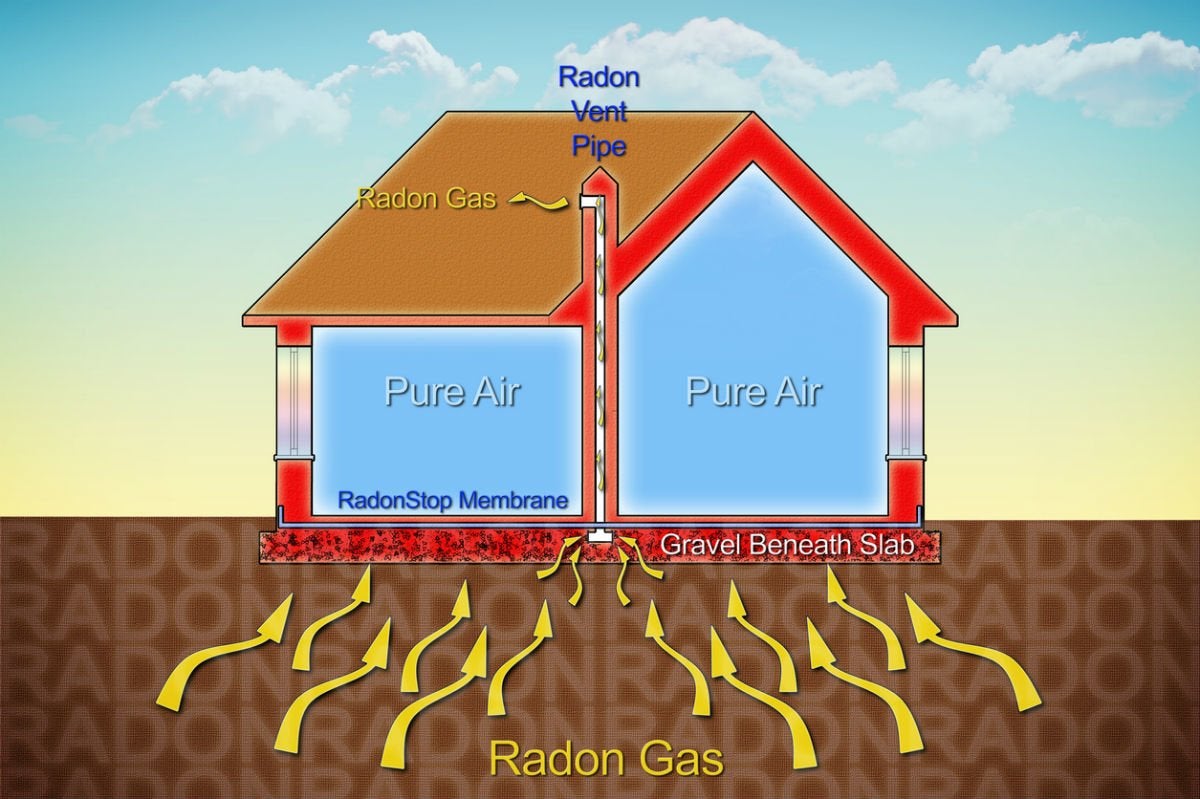Radiation Security
Is radon really bad for you?
Breathing radon over time increases your risk of lung cancer. Radon is the second leading cause of lung cancer in the United States. Nationally, the EPA estimates that about 21,000 people die each year from radon-related lung cancer. Only smoking causes more lung cancer deaths.
Nevertheless, the outright varieties of radon-induced lung cancers cells are a lot bigger in people that smoke, or who have actually smoked in the past, because of a strong consolidated result of cigarette smoking and radon. Because research, a substantial result (95% CI) was acquired for the Bq/m3 category.
The EPA establishes the level of risky radon gas direct exposure at or above 4 pCi/L. It's Go to this website advised that you undergo mitigation initiatives to decrease direct exposure if your house has radon gas degrees surpassing this action degree. You'll absolutely require reduction and also may need much more comprehensive renovations to seal off the resource of the gas if screening reveals a much higher level.
Is radon mitigation really necessary?
When radon gas enters the body, it exposes the lungs to small amounts of radiation. In small quantities, experts say this is harmless. However, in persistent exposures or larger quantities, radon can damage the cells of the lining of the lungs, increasing a person's chance of developing lung cancer.
This is the degree of around 90 percent of residences in the USA. The EPA advises that home owners take action when exposure levels get to over 4 picoCuries per litre, as a result of the idea that enhancing radon direct exposure is correlated to a progressively higher threat for cancer cells. Around one in 15 homes in the USA has raised radon levels. The odor free gas can go into homes via splits in walls, floors and foundations.
- Your threat of lung cancer raises considerably with direct exposure to higher radon levels.
- Lung cancer cells threat climbs 16% per 2.7 pCi/L increase in radon direct exposure.
- Radon gas is a naturally-occurring by-product of the radioactive decay of Uranium in the dirt.
- Depending on your geographical place, the radon degrees of the air you take a breath beyond your residence might be as high as 0.75 pCi/L.
- The national standard of outside radon levels is 0.4 pCi/L and also it is estimated by the National Academy of Sciences that outdoor radon levels cause roughly 800 of the 21,000 radon induced lung cancer deaths in the US annually.
- The United States EPA has placed it clearly, mentioning, "Any type of radon direct exposure has some risk of creating https://pbase.com/topics/maevynvchz/reducing236 lung cancer cells.
How do you eliminate radon?
Possible symptoms include shortness of breath (difficulty breathing), a new or worsening cough, pain or tightness in the chest, hoarseness, or trouble swallowing. If you smoke and you know you've been exposed to high levels of radon, it's very important to quit smoking.

As an example, an individual living in a home with a radon degree of 4.0 pCi/L or reduced has a roughly 7 in 1000 opportunity of getting sick. On the various other hand, an individual living in a home with a radon degree of 20 pCi/L or higher has a 36 in 1000 possibility of having lung cancer. The World Wellness Company (THAT) established an action degree of 2.7 pCi/L based upon a three-year globally study by more than 30 famous researchers.
What are the symptoms of radon in your home?
If a person has been exposed to radon, 75 percent of the radon progeny in lungs will become "harmless" lead particles after 44 years. When an alpha particle damages a cell to make it cancerous, the onset of lung cancer takes a minimum of 5 years but most often 15 to 25 years, and even longer.
You angle know whether your home has undesirable levels of the gas unless you have the air examined since you cant see or Check out this site smell radon. However, if tests show that radon is putting you and your family in danger, you can take some basic steps to clear the air.
How long does it take for radon to cause cancer?
Fact: You will reduce your risk of lung cancer when you reduce radon levels, even if you've lived with an elevated radon level for a long time. Keep in mind that radon levels below 4 pCi/L still pose some risk and that radon levels can be reduced to 2 pCi/L or below in most homes.
